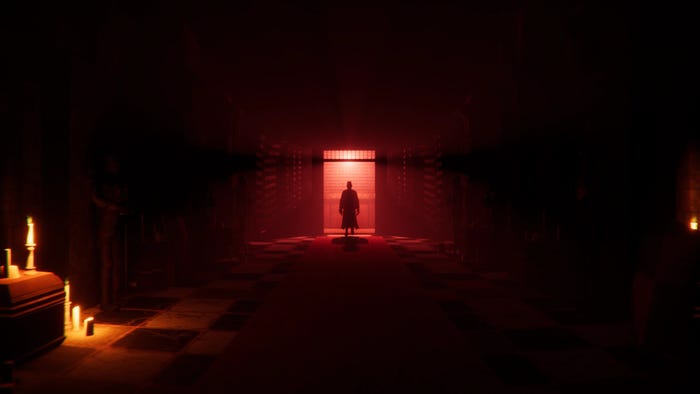
Featured Blog | This community-written post highlights the best of what the game industry has to offer. Read more like it on the Game Developer Blogs.
A quick essay on why the term "narrative wrapper" is actually a pernicious evil that's damaging to both narrative and the player experience.

And here is why I hate the term “narrative wrapper”.
What is a wrapper? It’s something that’s put around an object, not intrinsically part of the object. It’s something that’s taken apart to get to the good stuff. It’s something that’s discarded as unimportant. It’s something that, 9 times out of 10, has disgusting congealed faux-cheese on it.
And so when we talk about the “narrative wrapper” of a game, we’re implicitly stating that the narrative is not of the game itself. It’s something we’re supposed to wrap around the gameplay to make it transportable and attractive, and keep the targeting reticule from dripping burger grease on our fingers, but it’s ultimately unattached and disposable.
Which, to be blunt, irritates me to no end.
Because yes, you can have a narrative wrapper on a game, one that you discard as soon as it’s time to start blasting or moving geometric shapes around or whatever. But I’d like to think we’ve moved past that. That we understand that narrative and gameplay are part of a unified whole that, when combined with a player’s choices, creates the play experience. That a game doesn’t have to have a lot of narrative to have an appropriate amount of narrative for what it presents, in order to provide context to the player actions and create a satisfying arc to their progression.
But Rich, I hear you say, not every game has a narrative element. Not every game needs a narrative element. Take, for example, tower defense games. Or Minecraft. Completely narrative free!
To which I say, cunningly (because this is my blog and I win all the arguments here), that’s absolutely not the case. Because when most people think of game narrative, they think of the explicit narrative - the story of getting from point A to point B, and probably slaughtering a zillion hapless orcs/enemy soldiers/terrorists/space aliens/zombies/geometric shapes infused with dubstep along the way.
But that’s just the explicit narrative. There’s also implicit narrative built into every game though the choice of setting, items, character design - the assets of the game tell a story, if only by their very existence. Or, to put it another way, think about the archetypal tool you get in Minecraft. It’s a pickaxe. It’s not a tricorder. It’s not a Black and Decker multi-tool. It’s a pickaxe, and through it’s very pickaxe-ness - low tech, implied manual labor, etc. - it tells part of the story of the world it exists in. Ditto for those towers in tower defense games that everyone claims come narrative free - they’re shaped like something, they’re shooting something, and those choices frame a story before word one of any dialog or plot gets written. If you’re shooting aliens in a tower defense game, you’ve established genre (science fiction) and technology (aliens with enough tech to invade, you with enough tech to fight back); your backdrop implies the course of the conflict so far, and so on. As soon as you decide what a game asset is, you’re implying the narrative that allows it to exist and function.
Which is another way of saying that narrative is baked in, blood and marrow, to games. It’s not a wrapper, though God knows enough people have tried to separate story and gameplay like one of them has to walk home across the quad in last night’s jeans. Yes, you can divorce narrative elements from gameplay (Or as we used to call it, “put it in the cut scene”) but that’s a fundamental misunderstanding of what the narrative elements of a game are, and how they interact, inextricably, with gameplay. If you think of narrative as something external to the game - a wrapper, perhaps - then you’re missing the point, and your game will be the worse for it.
And that’s why I hate the term “narrative wrapper” - because it damages narratives and it damages games, and it damages the understanding of how narrative works in games. And it gets crappy congealed cheese all over my deliverables, and we just can’t have that sort of thing.
(Note: Originally published at Dansky Macabre)
Read more about:
Featured BlogsAbout the Author(s)
You May Also Like









